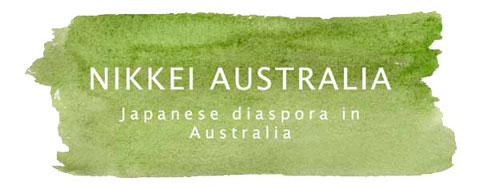by Elysha Rei
Read Blog 1 here.
The halfway point of my residency was marked with a ‘nori tori’ adventure with the Victoria Nikkei Cultural Society, harvesting seaweed off Gabriola Island. Travelling with Japanese-Canadian artist Bradley Kurushima and his wife Annika, we passed through Duncan, a city on the southern part of Vancouver Island in British Columbia, and took a ferry from Nanaimo, pronounced nuh·nai·mow but nicknamed the seven potatoes (nana imo), by the Japanese-Canadian community.
After a short ride over the breezy ocean to Gabriola Island, we collected as a group of nearly 20 people to scale the slippery coastline, armed with buckets and waterproof clothing. Luckily the weather had held out, with the sun shining on an area of the cove that was sheltered from the cold wind. Using our spades, blades and hands, strands of seaweed that were growing on the rock surfaces were pulled into our buckets, to be later processed and prepared to eat. It was a wonderful day of conversations and fresh air, also resulting in a dozen bags of wakame to eat and share.

After weeks of community immersion and research into archival records and museum visits, the creative ideas were brimming and starting to manifest in the studio. The studio wall began to grow with reference images, sketches, and paper cuts inspired by the ongoing field research.
This is a hand-cut paper work featuring the fuki plant (Japanese butterbur) – cultivated and eaten at internment camps by Japanese Canadians. The species is now classed as invasive as the descendants of these plants continue to thrive in the areas of former internment camps.

In the development of this work, I created paper cut barbed wire studies, learning its form in hand-cut washi paper, making a gentle and fragile effigy of a harsh mechanism for incarceration. The barbed wire is an intriguing visual as camps in Canada didn’t need to use it, instead relying on the tyranny of camp remoteness to keep people there. In Australia and the US, barbed wire was used in the camps.

I’ve used it in this work to connect to feelings of incarceration and internment, but also of protection. As much as internment years were horrific moments of entrapment, ironically, a couple of oral histories I’ve come across from Australian and Canadian internees recall feeling protected within these confinements as the outside environment was equally as hostile towards people of Japanese ancestry.
The black circular design also references kamon (Japanese family crests) which are traditionally used to identify clans and family. Perhaps in a twisted sense, this work could be considered an identity crest for Nikkei generations who were interned.

As winter released its grip on Victoria and the blossoms started to bloom, my creative work took a new direction. After many years of referring to archival records for visual cues of historical narratives, I began experimenting with the act of cutting into a copy of a record, and recreating it in hand-cut paper. Using photographs from the Australian War Memorial, I investigated the Japanese gardens that internees in Australia created.

This hand-cut paper study pulled me in closer than I had anticipated. It references the AWM (Australian War Memorial) Item 122996 – featuring a Charnel House created by Japanese internees, commemorating those who passed away in the camp. This detailed work ended up placing quite a physical demand on my body, as small delicate cuts revealed the internees’ intricate stonework. There is a tension in this work that I keep coming across in my research of this history – the ambivalence of beauty and brutality sitting alongside each other.

Towards the end of my residency, the connections and interest with my work ramped up. I ended up conducting six in-person studio visits, a presentation to the PWFC cohort and a virtual studio visit hosted online by Yuki Kawakami from Nikkei Australia.
Although this creative bubble was just two months, the depth and breadth of connections I made, and the histories I learnt about, will last well beyond this time. My PWFC fellowship cohort became particularly close, as we bonded over shared lunches, conversations, ideas, information, and ultimately, the passion to contribute to this project. We vowed to stay in touch and meet again for a conference in New Orleans in April 2024.
In the meantime, I will continue my involvement with the PWFC project by leading the ‘gardens’ archival spotlight for the developing website, and contributing content to the first project book. My studio in Brisbane will continue to nurture the seeds of creative work that were found and sown in Canada. Although the residency has come to an end, in many ways this is just the beginning.
Elysha Rei is a Japanese-Australian artist who explores narratives of cultural identity, site-specific history and environmental elements through paper cutting and public art. She is Chair of Nikkei Australia (2022-2025).
Other stories about PWFC Project:
Past Wrongs Future Choices Project
Nikkei Australia begins major international collaborative project, Past Wrongs, Future Choices






Recent Comments